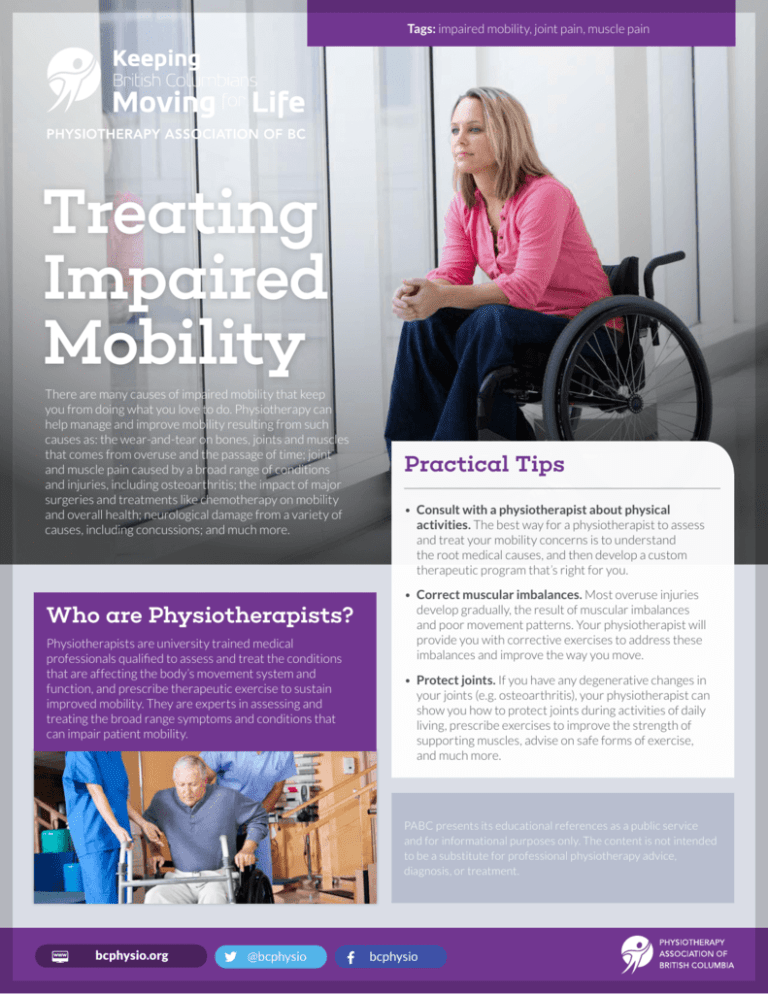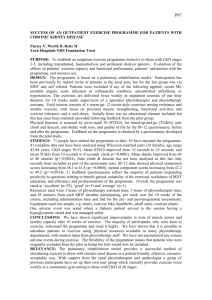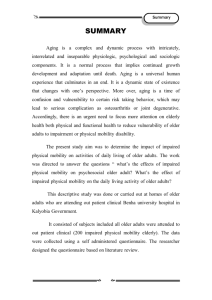Treating Impaired Mobility
advertisement

Tags: impaired mobility, joint pain, muscle pain Treating Impaired Mobility There are many causes of impaired mobility that keep you from doing what you love to do. Physiotherapy can help manage and improve mobility resulting from such causes as: the wear-and-tear on bones, joints and muscles that comes from overuse and the passage of time; joint and muscle pain caused by a broad range of conditions and injuries, including osteoarthritis; the impact of major surgeries and treatments like chemotherapy on mobility and overall health; neurological damage from a variety of causes, including concussions; and much more. Who are Physiotherapists? Physiotherapists are university trained medical professionals qualified to assess and treat the conditions that are affecting the body’s movement system and function, and prescribe therapeutic exercise to sustain improved mobility. They are experts in assessing and treating the broad range symptoms and conditions that can impair patient mobility. Practical Tips • Consult with a physiotherapist about physical activities. The best way for a physiotherapist to assess and treat your mobility concerns is to understand the root medical causes, and then develop a custom therapeutic program that’s right for you. • Correct muscular imbalances. Most overuse injuries develop gradually, the result of muscular imbalances and poor movement patterns. Your physiotherapist will provide you with corrective exercises to address these imbalances and improve the way you move. • Protect joints. If you have any degenerative changes in your joints (e.g. osteoarthritis), your physiotherapist can show you how to protect joints during activities of daily living, prescribe exercises to improve the strength of supporting muscles, advise on safe forms of exercise, and much more. PABC presents its educational references as a public service and for informational purposes only. The content is not intended to be a substitute for professional physiotherapy advice, diagnosis, or treatment. bcphysio.org @bcphysio bcphysio Tags: impaired mobility, joint pain, muscle pain Practical Tips • Correct movement patterns. Poor movement patterns during sports (e.g. incorrect landings during jumping) greatly increase your risk of traumatic hip and knee injuries. You can learn from a physiotherapist about how to move properly to minimize risk. For more information To find a physiotherapist best for you, visit the PABC’s website at www.bcphysio.org or download the Find a Physio app. • Increase overall strength. You should seek to achieve an average goal of 150 minutes of moderate intensity aerobic activity per week, even in just short, ten-minute bouts. Your physiotherapist can provide an exercise program — one that may include walking, cycling, swimming, water exercises, golf and weight training — to help you regain strength, flexibility and balance needed to safely resume recreational activities. • Keep moving. It sounds simple, but you can restore and maintain the mobility of your body with regular exercise. When increasing activity or starting a physiotherapy program, you should give yourself rest breaks during the day to compensate for increased activity. Balancing activities, exercise, and rest times is critical to staying healthy and physically active, and increasing energy. bcphysio.org @bcphysio bcphysio







![CHEER Seminar Promo: 2nov2015 [DOC 142.50KB]](http://s3.studylib.net/store/data/007520556_1-22ae8f83ff74a912c459b95ac2c7015c-300x300.png)

